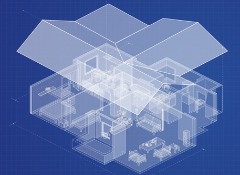Energy efficiency awareness in the U.S.goes back at least to President Jimmy Carter in a cardigan sweater warning Americans of a global energy crisis back in 1977.In the decades since,much progress has been made,which could give the impression that we're reaching the ends of our efficiency gains.But a report released this week finds that there are still significant savings to be had—many of which can be deployed on an individual level to lower household energy bills.

In"Frontiers of Energy Efficiency:Next Generation Programs Reach for High Energy Savings"the American Council for an Energy-Efficient Economy examines 22 initiatives to assess their performance to date and identify potential gains moving forward.The following technologies are most ripe for the picking:
LED lighting
Ductless heat pumps
Heat pump water heaters
High-efficiency clothes dryers(especially heat pump units)
Advanced power strips
Home energy displays and smart meters
The report also found big potential savings through retrofit programs aimed at existing housing.This includes such measures as adding insulation,sealing duct work,upgrading heating and cooling equipment,and installing more energy-efficient appliances,including refrigerators.
All together,the various technologies and programs identified in the report have the potential to sustain high savings—27 percent of forecasted electricity use and 19 percent of forecasted natural gas use by 2030."As our report shows,energy efficiency opportunities are abundant,"says Dan York,ACEEE utilities program director,and lead-author of the report,in the news release."Even as tried and true energy efficiency measures become commonplace,we continue to dig deeper and find new technologies and practices plus new program approaches to unlock further opportunities to achieve large energy savings."





